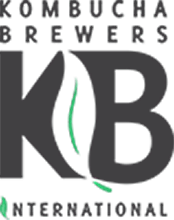The Kombucha Biofilm: a Model System for Microbial Ecology
Authors:
Ashley Shade
Abstract:
Microbial systems are inherently complex and difficult to predict. A strong model system of naturally-occurring microbial consortia would provide an opportunity to address key questions in microbial ecology. Kombucha is a traditional, fermented tea produced by a biofilm of yeast and acetic acid producing bacteria. Because it has well-defined functional products and is maintained easily at the laboratory-scale, kombucha has potential as a mixed-microbial model system. I provide a first exploration of the kombucha system for microbial ecology. I first describe the kombucha microbial consortia using isolation and 16S 454 tag-pyrosequencing. I assessed the temporal dynamics of kombucha by tracking microbial abundance and key products from inoculation to culture maturation. Then, I observed the spatial structure and association of abundant organisms with each other in the cellulose matrix of the biofilm using confocal microscopy. Finally, I designed an experiment to assess the influence of pH and tea origin on the consortia and their products. I found that kombucha habours a dominant Glucoacetobacter population, and uncovered evidence for more resolved population-level diversity within the biofilm. Cell counts of the kombucha broth peaked at pH 3 on day 3 after inoculation, indicating that the acid concentration of the peak may provide a strong environmental filter for the microbes. The biofilm was heterogeneous in space, containing patches of yeast within a matrix of cellulose and segregated bacterial cells. Finally, tea origin and pH partially determine the rate of product evolution in kombucha broth, and tea may inhibit the growth of the consortia. This work lays a foundation for using kombucha as a model system for microbial ecology.
Keywords: acetic acid, acetobacter, cells, cellulose, iron, ph, space
Country: USA
Citation: Final report on research conducted during the Microbial Diversity course, Marine Biological Laboratories, Woods Hole, MA
Study Mailing Address:
Gordon and Betty Moore Foundation Fellow of the Life Sciences Research Foundation Yale University
Date Updated: February 16, 2021
 0 people like this study.
0 people like this study.